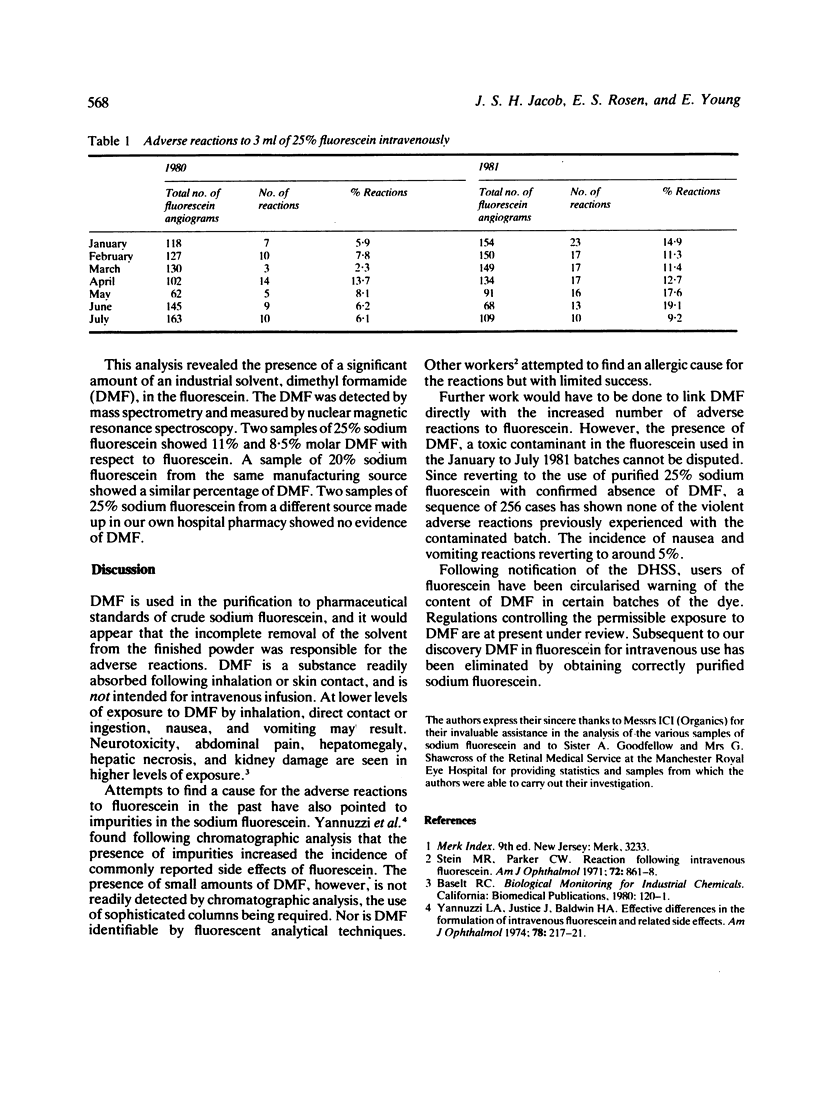Abstract
The revelation that intravenous sodium fluorescein is not all that it might seem to be may be a significant finding in the light of the adverse reactions to fluorescein that have been previously reported. Analysis of commercially prepared intravenous sodium fluorescein by mass spectroscopy and nuclear magnetic resonance has indicated that an industrial solvent used in the manufacturing process has not been eliminated. Dimethyl formamide is an industrial solvent with a maximum acceptable exposure level of 10 parts per million for dermal contact. It has been found in quantities of 5000 parts per million in the fluorescein for intravenous use. This investigation was prompted by a significant increase in the adverse reactions in patients receiving intravenous fluorescein in the retinal photographic unit at the Manchester Royal Eye Hospital.
Full text
PDF

Selected References
These references are in PubMed. This may not be the complete list of references from this article.
- Stein M. R., Parker C. W. Reactions following intravenous fluorescein. Am J Ophthalmol. 1971 Nov;72(5):861–868. doi: 10.1016/0002-9394(71)91681-3. [DOI] [PubMed] [Google Scholar]
- Yannuzzi L. A., Justice J., Jr, Baldwin H. A. Effective differences in the formulation of intravenous fluorescein and related side effects. Am J Ophthalmol. 1974 Aug;78(2):217–221. doi: 10.1016/0002-9394(74)90079-8. [DOI] [PubMed] [Google Scholar]


